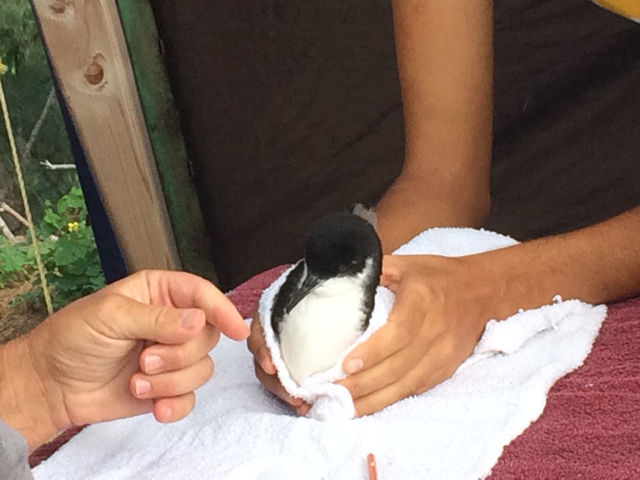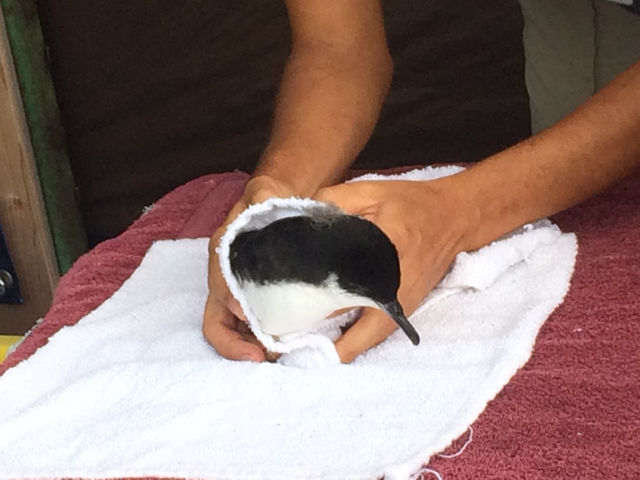KILAUEA — Chick No. 8 was a surprise addition to the ‘A’o (Newell’s shearwater) colony at Nihoku predator-proof enclosure, but it wasn’t a shock when the baby seabird fledged on Sunday. In fact only a week before, Robby Kohley of
KILAUEA — Chick No. 8 was a surprise addition to the ‘A’o (Newell’s shearwater) colony at Nihoku predator-proof enclosure, but it wasn’t a shock when the baby seabird fledged on Sunday.
In fact only a week before, Robby Kohley of Pacific Rim Conservation, told a group of hikers on a tour with the Kilauea Point National Wildlife Refuge that he expected all eight of the baby shearwaters under his care to leave their nests within the next month.
This chick is one of five that have fledged from the refuge colony, but its unusual story makes it special.
“It was rescued from one of the upper montane colonies after being found lost, alone and hungry on a trail in the Hono o Na Pali Natural Area Reserve in August,” said Andre Raine, of the Kauai Endangered Seabird Recovery Project. “If the chick had been left by itself in the colony, it would have surely died, so it’s great to see it now flying safely out to sea as a strong and healthy fledgling.”
That’s the first time KESRP team members have found a chick wandering alone and Chick No. 8 was flown to the Save our Shearwaters program at the Kauai Humane Society.
Tracy Anderson, SOS program coordinator took over care of the chick from there, feeding it daily and eventually it was taken to a burrow within the predator-proof fence to join the shearwater translocation project.
The project’s goal is to create a place where ground-nesting seabirds can mate and raise their young safely away from predators.
Creation of the new colony “provides hope for these species that are in a precarious position,” Jenifer Waipa, supervisory park ranger at Kauai National Wildlife Refuge Complex told TGI.
Newell’s Shearwater chicks imprint on their birth burrow location when they first emerge from their nests, which are usually between three and six feet below the ground. About five years later, as adults, they’ll return to the same exact location to breed.
The new colony will be the only fully protected colony of this species anywhere in the Hawaiian Islands.
“Team members removed seven, large, healthy chicks from their mountain burrows by hand. Once they arrived at Nihoku their growth was carefully monitored and they were hand fed daily, a slurry of fish and squid,” said Lindsay Young, project coordinator with Pacific Rim Conservation. “Once they were big enough, their caretakers opened their burrows to allow them to depart when the time came.”
Chick No. 8 will be out to sea for the next three to five years and is expected to return to the Nihoku predator-proof enclosure when it’s time to mate and start the next generation of Newell’s shearwaters.
“It’s one of those lucky things that the colony monitoring team people found this little chick,” Kohley said. “It acclimated to its burrow well and its weight and wing cord (wing length) steadily increased, so it’s a nice team effort. There are so many birds that don’t make it; the fact that they were able to rescue this bird is pretty exciting. It is a bit of a miracle and a bright spot.”




